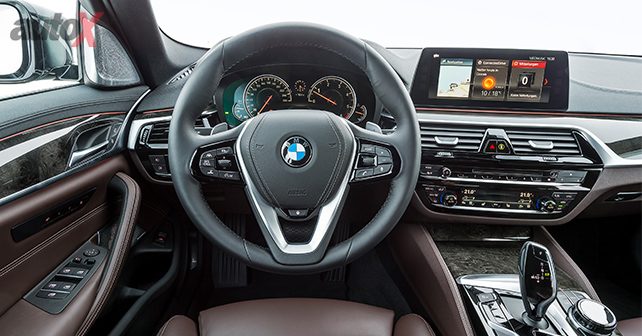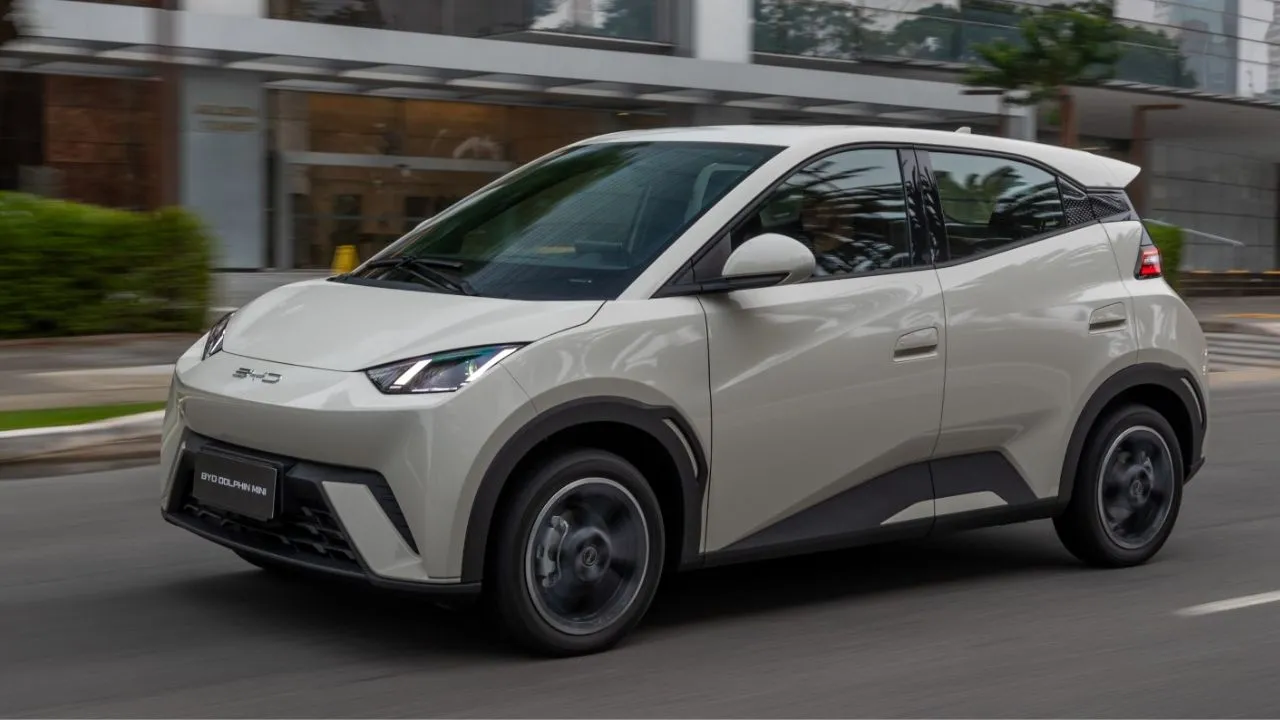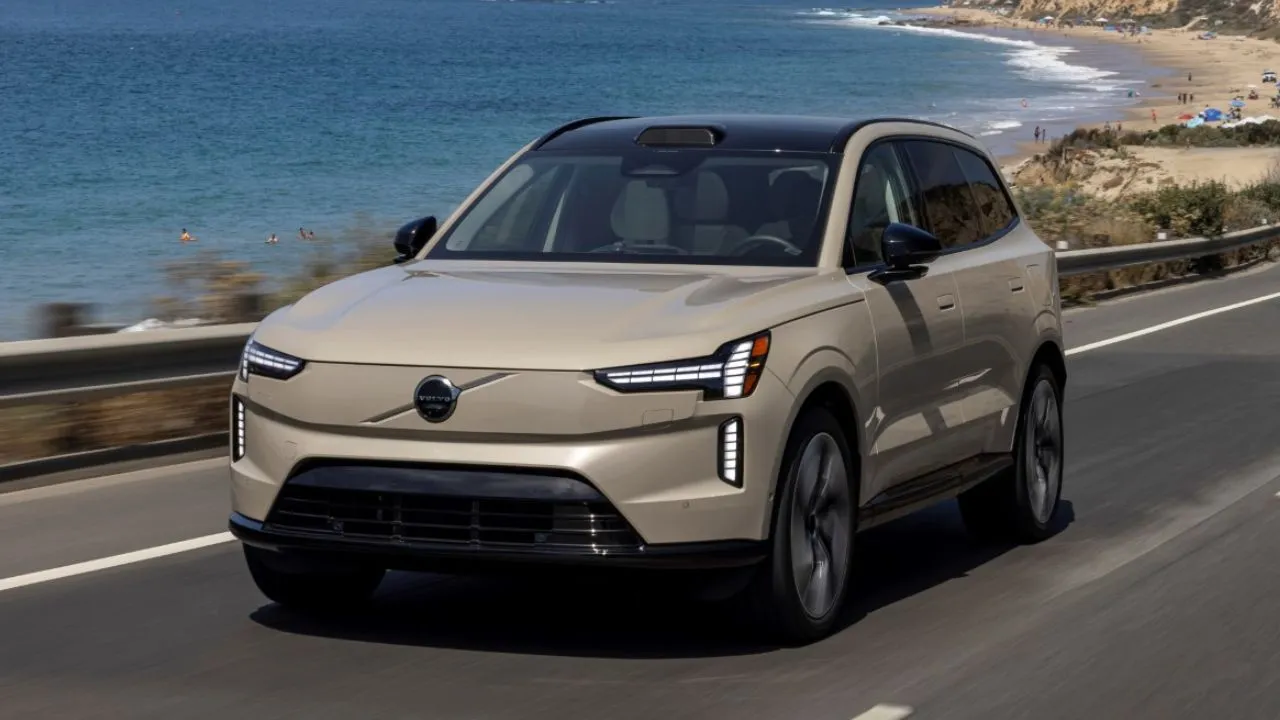BMW 5 Series Review: First Drive
The 3-Series has always been the go to enthusiast car for many, but it's the BMW 5-Series that have always garnered affection - for the amazing rear comfort - of the Indian consumers. Read our full BMW 5-Series review to see what's new with this opulent saloon.

This is the big one from BMW – the brand new 5 Series. Globally, the 3 Series may be BMW’s bestseller, but in India it’s the 5 that counts!
Over the last few years, BMW has attempted to retract from the rat race – in the Indian market at least! They say that being number one isn’t their first priority – being profitable and running a sustainable business is. Either way, the most crucial piece of the pie in our neck of the woods for BMW is the 5 Series. So, it’s imperative that they get it absolutely right.
And since an all-new model only comes along once every seven years or so, there are no second chances. Not only that, but the brand new Mercedes-Benz E-Class and the new 5 Series will be out within just a few months of each other – so we’re set for no-holds barred, gloves off action. Expect the new E within the first couple of months of 2017, while the 5 will make it closer to mid-year.
But it isn’t all about sales numbers, there’s a great deal of pride at stake as well. And, of course, the new Audi A6 won’t be too far behind either. Plus, there’s now a dark horse in the race as well, by way of the all-new – and really rather striking – Volvo S90, not to forget the all-new Jaguar XF. So, let the games begin…
Visually, it’s quite clear that the new 5 is very much an evolution of its predecessor. Sure, it takes plenty of cues from BMW’s flagship – the 7 Series. So, the headlights now extend all the way to the slightly more flared nostrils – all of which works to ensure that the front end looks more aggressive than before. It also has active ‘air flaps’ in front, which means that vents in the kidney grille open and close to optimise aerodynamic efficiency and ensure an impressive coefficient of drag of 0.22. In profile, it appears more taut and sharp. At the rear, though, it seems like the designers haven’t quite done enough. While the new 7 is actually quite sleek and modern around back, this one seems to be very much the same as before – with the exception of slightly elongated tail lights. That being said, there’s no getting away from the fact that the new design is typical 5 Series. The ‘Dame Edna’ headlights and quirky boot of the Chris Bangle 5 Series of a decade ago have been banished to the history books, and this one strictly has its game face on – and its proverbial Hugo Boss suit.

On the inside, it’s much the same story as well. The cabin is very clearly inspired by the new 7 – which means that it’s a lot more plush than before. Naturally, of course, it’s got a whole lot of tech as well. The really important bit, though, is the fact that it addresses what was the biggest area of concern for the outgoing car – rear seat comfort. The new 5 Series is 36mm longer than the outgoing machine, and the extra space as a result is immediately evident the minute you step into the back seat. Not only are the seats far more comfortable than before, but there’s also a lot more head and legroom back there – nowhere near the acres of space you get in the extended wheelbase 7 Series, but certainly a lot more than ever before. The entire cabin, in fact, feels more upmarket. The levels of fit-and-finish are on another level altogether. Our test car also had a 10-channel, 16-speaker, 1,400-watt Bowers and Wilkins audio system, and so it was littered with beautifully finished stainless steel speaker grilles all over the cabin – all of which added to the luxury quotient. Plus, the seats in our ‘Luxury’ line test car came draped in quilted leather, and were incredibly comfortable.
The list of new technology in the car is endless. A 10.25-inch touch-screen sits atop the centre console and features a completely new iDrive interface. A digital instrument cluster is accompanied by an all-new multi-colour head-up display that’s 70% larger than before and not only gives you speed & navigation instructions, but also speed limit warnings, adaptive cruise control information, and even a digital stop sign that pops up with an audible alert. That excuse of “I’m sorry officer, I didn’t see the sign,” certainly isn’t going to work anymore!
The digital instrument cluster still isn’t as good as Audi’s Virtual Cockpit, but BMW makes up for that with a truly impressive – albeit slightly distracting – head-up display. The thing is, though, impressive as it is, we won’t be using much of this tech in India. Speed limit information is picked up via a camera atop the windshield that reads road signs – of which we don’t have many, never mind the fact that speed limits are rarely enforced anyway. And, of course, stop signs are either non-existent or ignored altogether. But, back to the car…

The 5 Series also has a fairly advanced semi-autonomous driving mode. All you have to do is engage the adaptive cruise control and then lane-assist to enable the car to drive along the highway with little input from the driver. It’ll follow the car in front and even steer around sweeping bends. All the driver has to do is lightly keep one hand on the wheel – remove it, and the car will give you immediate reminders to put your hands back on the wheel. And rightly so, since there were a number of instances when the car seemed to weave within its lane or even stray out of lane. The cars behind me either thought that I was an exceptionally bad driver, or drunk.
The biggest challenge for the 5 Series was the lane-change assist, which required you to tap the indicator in the intended direction of travel. This leads the car to move to the desired lane if the blind-spot warning gives it the green flag. And move it does, but the trouble arises when it comes time to stabilise the car in its new lane. Most times, it aimed straight for the Armco or wall beyond the solid white line that marked the limit of the motorway – something the cameras really ought to have picked up. Let’s just say that autonomous driving is still an inexact science. I suppose it didn’t help that it was either overcast or pouring with rain during our two-day test. Nevertheless, it’s still a work in progress.
Technology that we will use in India, however, is gesture control – that’s made its way into the 5 from the 7 – and wireless connectivity for Apple CarPlay and Android Auto, which is new. The driving modes now come with an Adaptive mode, which adjusts to your driving style as well as to the road ahead based on GPS information – if so equipped. Another aspect that will go down extremely well with future Indian owners is the ride-and-handling balance. The ride, even on the 275/35 R19 performance tyres on the 540i M-Sport, was exceptionally good despite the broken roads on the Portuguese coast around Cabo da Roca – the most westerly point on the European continent.
There were two cars for us to sample – the 530d xDrive with all-wheel drive and the 540i rear-wheel drive petrol variant producing 335 horsepower. I have to admit that I wasn’t entirely sure what to make of the diesel-powered 5 Series that we first drove. The previous generation 530d was a stonker of a machine – virtually an everyday M5 minus the insane reserves of power. The BMW engineers had gone to great lengths to point out that they had managed to reduce the overall weight by 100 kilos over the previous generation. And, unlike the new 7 Series, which has what BMW calls Carbon Core construction (carbon fibre in the B-pillars and roof in order to reduce weight), the new 5 – based on the same modular platform as the 7 – uses a mix of high-strength steel, aluminium and magnesium to provide the majority of the weight savings. The full weight loss regime is accomplished by taking a scalpel to virtually every single component in the car. Their target was, thus, achieved without the use of carbon fibre – which anyway would have been too expensive and impractical in a car that has the kind of volumes that the 5 Series has.

In addition to lower mass, the engines in the new 5 Series have improved efficiency and power thanks to better thermal management. Given all of that, and how athletic the new 7 Series feels, I expected the new 5 Series to be the ultimate sports sedan and luxury car combined. And while the 530d xDrive felt extremely capable and refined, it wasn’t very engaging for the driver. Of course, these heightened levels of comfort and refinement will undoubtedly go down very well with Indian owners – but, for me, there was something missing. The steering was corrupted by the various driver assistance technologies, and while the drivetrain was as smooth, silent and capable as you can possibly imagine it just didn’t seem to provide that all-important zing.
But, then, the following day we drove the 540i M-Sport – which was a completely different animal. The more aggressive stance and thick-rimmed (too thick if you ask me) steering wheel meant business. The 3.0 litre twin-scroll turbo petrol motor was relentless in it power delivery and the chassis felt completely unperturbed by the task of putting copious levels of power down to the ground – despite the fact that we were in the middle of a torrential downpour virtually the entire day. The chassis was unflappable, the steering direct, and the drivetrain immediate. This was everything I had hoped that the new 5 Series would be. At the same time, it was incredibly comfortable and poised.

Now neither of these models will come to India – neither the all-wheel drive 530d nor the fire-breathing 540i. What we will get will be the 520d, maybe the 530d, and eventually the next generation M5. There isn’t a 520i in the line-up currently, so there’s a chance we may even get the 530i that has a 2.0 litre turbocharged petrol motor that produces in excess of 250 horsepower. In the case of the 530d xDrive I can only imagine that the all-wheel drive hardware added complexity and weight in all the wrong places, and that the two-wheel drive variants that we’ll get in India will have all the inherent goodness of the new 540i.
Now both the diesel models – the 520d and 530d – are Euro VI compliant with particulate filters and ammonia injection tanks. Naturally, when they come to India, some of this hardware will be left out – at least until the Euro VI norms are enforced.
All told, what we have here is a machine that’s very advanced, capable, refined and comfortable – and so it ticks all the boxes that the 5 Series should. I still can’t help but feel that they’ve been a little too conservative with the design, both inside and out. But, then, what is it that they say – if it ain’t broke, don’t fix it. Wise words. And ones that BMW has certainly taken to heart!
Also Read: Frank Schloder, Acting President, BMW India, accepts the award for the 750Li.
Engine: 2,993cc / In-line 6-Cylinders / Variable Geometry Turbocharger / CRDi
Fuel: Diesel
Transmission: 8-Speed Automatic / All-Wheel Drive
Power: 261bhp @ 4,000rpm
Torque: 620Nm @ 2,000 - 2,500rpm
Acceleration: 0-100km/h – 5.4 seconds
X-FACTOR: A 5 Series that feels like a mini 7 Series, but still drives like a sports sedan – well, in M-Sport spec anyway.






.webp)




.webp)



















Write your Comment on